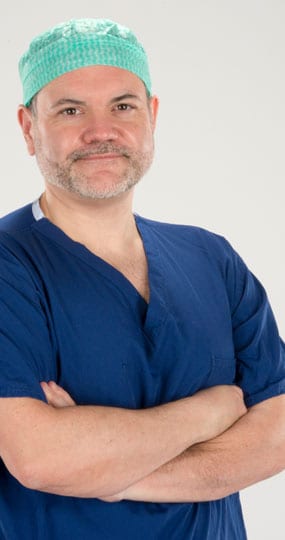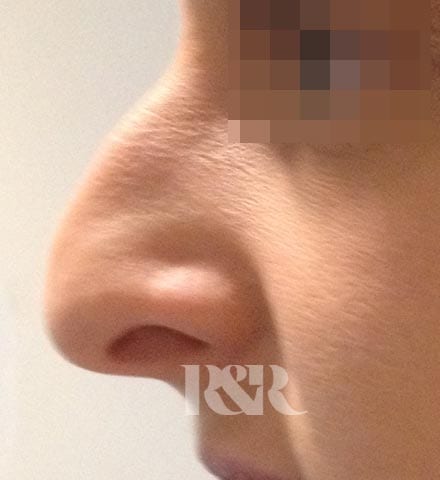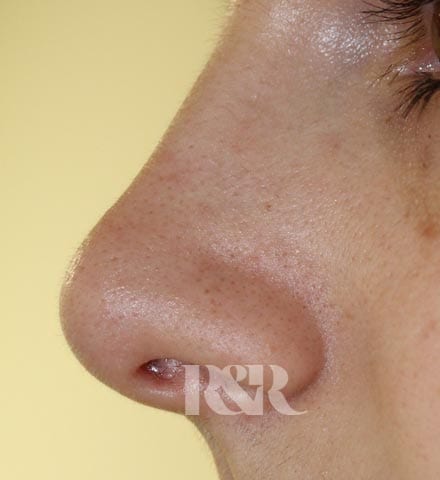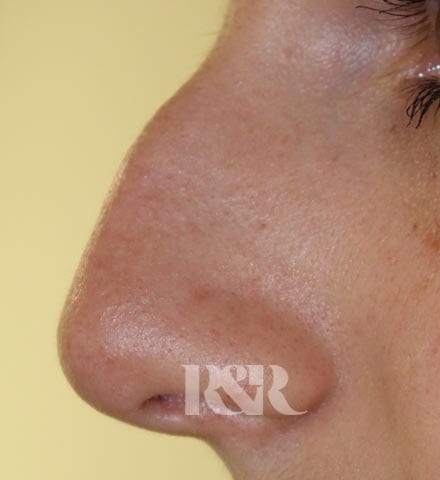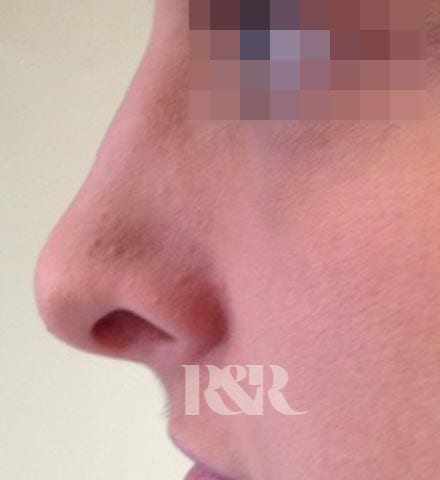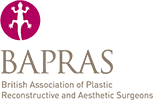Procedure — face
Rhinoplasty
Rhinoplasty is more commonly known as a ‘nose job’. Surgical techniques are used in this procedure to improve the appearance of a misshapen nose. A variety of concerns can be addressed, including: a large nose, crooked nose, hooked nose, a wide bridge, a flat nose, an upturned nose and bump in the nose (also called dorsal hump). If the functioning of the nose is compromised, making it difficult to breath through, this can also be revised.
As the nose is the most central feature on the face, it is a characteristic that many people feel is noticeable to others. If a person is unhappy with the way their nose looks, it can be difficult to hide or to make it less noticeable. This can then cause them to feel unhappy and embarrassed with their appearance.

Rhinoplasty is more commonly known as a ‘nose job’. Surgical techniques are used in this procedure to improve the appearance of a misshapen nose. A variety of concerns can be addressed, including: a large nose, crooked nose, hooked nose, a wide bridge, a flat nose, an upturned nose and bump in the nose (also called dorsal hump). If the functioning of the nose is compromised, making it difficult to breath through, this can also be revised.
As the nose is the most central feature on the face, it is a characteristic that many people feel is noticeable to others. If a person is unhappy with the way their nose looks, it can be difficult to hide or to make it less noticeable. This can then cause them to feel unhappy and embarrassed with their appearance.
At a Glance
Duration
1.5 - 3 hours
Type Of Anaesthetic
General or local anaesthetic
Return To Work (job dependent)
2 - 3 weeks
Day Case / Overnight
Overnight stay
Bra / Garment To Be Worn For
Splint for 1 week
Return To Gym
Dependent on healing
In-depth Procedure Information
The Consultation
At the consultation, you and your surgeon can have an open and honest discussion about what concerns you with your nose and the results you would like to see at the end. It is important that this conversation outlines the realistic results that can be achieved, according to your individual circumstances. It is quite common with rhinoplasty cases, that a patient is unhappy with the end result; feeling the procedure hasn’t quite met their expectations. At Reshape & Restore we will only go ahead with the procedure if we are certain that you fully understand what the rhinoplasty will actually achieve, for you! Each concern may require a different approach and your surgeon will outline the type of techniques that will be used. The recovery period can be quite complex and there will need to be some considerate aftercare instructions for you to follow; all of which will be explained, along with any possible risks and / or complications.
If any tests are required prior to surgery, this will be arranged and you will also be informed if there are any other instructions to follow so that a successful outcome can be achieved.
The Procedure
Revising the shape of the nose often requires the internal structure to be addressed; whether this is the bone, cartilage or both. This is usually accessed through the nostrils and a small incision is made at the base. If a small change is needed, your surgeon may adjust the positioning or remove some of the cartilage, whereas a more significant change may need to have bone added, reshaped or removed. Some people have thick, oily skin on the outside with the inner nasal structure being relatively small. By using an internal approach, the skin can be thinned, however it is important to note that the results can often be unpredictable.
In some cases a deviated septum is the cause of a crooked nose and to straighten this can help to better align the nose. Addressing the septum is known as a septoplasty and can be performed as a singular procedure, or in combination with the rhinoplasty. This particular procedure can help with freeing any blockages that may be impacting breathing.
Aftercare & Results
Surgery on your nose can cause some significant swelling, bruising and pain around the nose and the eyes. You will need a course of painkillers to help manage the sensitivity and you will need to keep as upright as possible to help reduce swelling and bleeding, which will include sleeping propped up on pillows. As your nasal passages will feel congested, you may feel the urge to blow your nose. Not only will this be very painful, but it may also trigger bleeding and disturb the wounds.
You will be required to attend a series of follow-up appointments so your recovery can be monitored and any internal and external dressing can be changed. For around 1 week a splint may be placed on your nose to help keep it in position while it heals.
Your healing will also benefit from the following: taking baths instead of showers, wearing front fastening clothing, avoiding strenuous activities and exercise, avoiding making extreme facial expressions, eating a healthy diet and brushing your teeth gently.The healing process may take several weeks to complete, with the full outcome being evident in around 12 weeks. Your nose should look straighter, with a more desirable shape that balances your facial features as a whole. Your nose may function better, and breathing becomes easier as any blockages caused by the septum is corrected.
FAQ's
There are many people who are unhappy with the appearance of their nose; whether they feel it is too large, too wide at the bridge, has a bump, is crooked or hooked. These concerns are often genetic or may have been caused by injury or trauma, resulting in damage to the cartilage or bone. In some cases the injury has caused the nose to become misaligned, in others, a bump can appear through the natural process of repair. Damage to the structure of the nose can sometimes result in a deviated septum, and whilst this may not always show on the outside, it can lead to difficulty with breathing. Undergoing rhinoplasty can not only help to improve aesthetic issues, but also to improve the nose’s functioning.
It is high in Reshape & Restore’s priorities to ensure that the patient’s best interests are always at the heart of the procedure, and that your safety is maintained at all times throughout. With each procedure, the surgeon is meticulous with tissue dissection, so as to avoid loss of structure, as well as over-correction – which can be difficult to live with.
The nose is a very sensitive feature and the rhinoplasty procedure can lead to a significant period of recovery. Swelling and bruising may last for several weeks and can extend to the area around the eyes. You will need to be careful as the nose heals and repairs; following the aftercare instructions meticulously. If the patient has blunt nasal trauma, swelling may last a bit longer, as can the swelling with those whose nose was broken prior to surgery. There may be some slight bleeding after the procedure and dressing packs will be applied under the nose.
Other complications, including: minor irregularities, infection, loss of smell and a perforated septum are less commonly experienced, but will all be explained during the consultation.
As rhinoplasty can be a complex procedure, with lengthy downtime attached, it is imperative that you are absolutely sure you want to go ahead. Two consultation sessions are usually standard practice at Reshape & Restore, to ensure that you have had sufficient time to consider your options and make a firm decision about the procedure. Our team are caring and considerate, and take every step to give you all the support you need. We make sure that you are well informed surrounding all the aspects involved within the procedure and we will always take the time to answer any questions or concerns that you may have.


Prices From
£9000
Plastic surgery procedures are not off the peg but tailor made, bespoke procedures that vary from person to person. The above prices act as a guide in the standard or average case. The actual cost of surgery may be less or more and will be confirmed after your consultation.
Enquire Today
